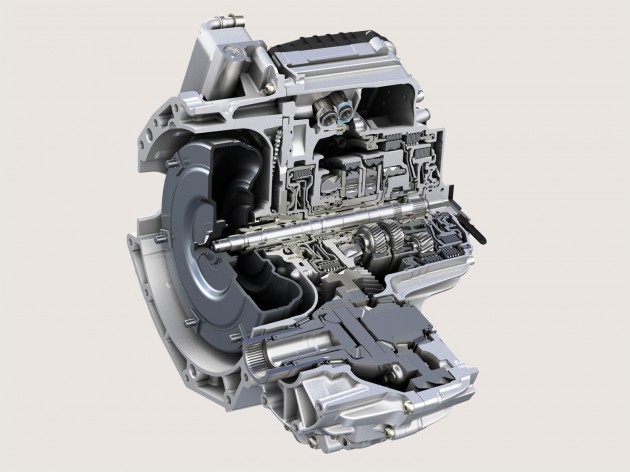The nine-speed transmission might be where the race to add gears ends, ZF Friedrichshafen CEO Stefan Sommer said, according to a report by Automotive News Europe.
He deemed nine speeds the “natural limit” because surpassing that number would add weight and complexity that cannot be offset by gains in fuel efficiency.
“There is no hard line, but you have to consider the law of diminishing returns. The question is whether adding even more gears makes sense,” he told the Automobilwoche Congress in Berlin. Automobilwoche is Automotive News Europe’s German sister publication.
ZF is expecting big sales gains for next year because Chrysler Group is adopting the German company’s eight- and nine-speed transmissions (pictured above) for mass-market models.
There have been reports of General Motors’ and Ford’s collaboration on nine- and 10-speed transmissions, as well as of Hyundai developing a 10-speed gearbox.
In an earlier Automotive News report, ZF North America president Julio Caspari hinted that a “Can-you-top-this?” cog race may be driven by marketing considerations rather than fuel economy, explaining that there is only an 11% gap between the most efficient transmissions today and a theoretically perfect gearbox.
Next year, ZF will start production of its 9HP nine-speeder at a Greenville, South Carolina plant, while Chrysler will manufacture that and the existing ZF eight-speeder under license at its Kokomo, Indiana plant.
ZF says the nine-speed transmission, which is designed for transverse-mounted engines, is up to 16% more efficient than a conventional six-speed automatic.
Looking to sell your car? Sell it with Carro.



AI-generated Summary ✨
Comments largely emphasize that nine speeds are sufficient for automotive transmissions, with some sarcastically suggesting more are unnecessary and could lead to complexity and reliability issues. Several comments praise the simplicity and reliability of older or fewer gearboxes like the 4-speed automatic, especially in markets like Malaysia. The discussion touches on the differences between CVT and traditional gearboxes, highlighting CVT's seamless operation but noting potential efficiency gaps. A few commenters sarcastically critique the obsession with increasing gears, suggesting it may be more about bragging rights than practicality. Overall, the sentiment favors proven, reliable transmissions over increasingly complex multi-speed gearboxes, recognizing that more gears do not necessarily translate to better real-world performance or fuel efficiency.